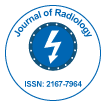开放获取期刊获得更多读者和引用
700 种期刊 和 15,000,000 名读者 每份期刊 获得 25,000 多名读者
索引于
- 哥白尼索引
- 谷歌学术
- 打开 J 门
- Genamics 期刊搜索
- 研究圣经
- 电子期刊图书馆
- 参考搜索
- 哈姆达大学
- 亚利桑那州EBSCO
- OCLC-世界猫
- SWB 在线目录
- 虚拟生物学图书馆 (vifabio)
- 普布隆斯
- 日内瓦医学教育与研究基金会
- ICMJE
有用的链接
开放获取期刊
分享此页面
抽象的
Salivary Gland Tumor in Parapharynx Space, Radiologic Evaluation by the Way of Two Cases and Literature Reviewed
Francisco Medrano, Palma YT, Matus R, Quezada C, Padilla R, Carmona G
The neoplasms of the Parpharyngeal Space (PPS) is rare 0.5% - 1% of all head and neck tumors [1]. The PPS is an inverted cone-shaped region that extends from the skull base to the hyoid bone. A complex structure called the tensorvascular- styloid fascia, divides the PPS into the prestyloid and poststyloid compartments. The PPS can be involved by four different types of neoplastic lesions: primary tumors (benign or malignant), metastatic lymph nodes, lymph node involvement by lymphoproliferative diseases, and tumors arising from adjacent sites that secondarily extend into the PPS [2-4].
Some 50% of the neoplasms arise from the deep lobe of the parotid gland or minor salivary gland. These lesions are typically benign pleomorphic adenoma and involve the prestyloid compartment of the PPS . In the retrostyloid compartment, the most common tumours are neurogenic (schwannoma, paraganglioma, neurofibroma [5].
The goal of this paper is to report two cases of salivary gland tumours in PPS and the importance of imaging studies in the evaluation and differential diagnosis of tumors that involve it.

 English
English  Spanish
Spanish  Russian
Russian  German
German  French
French  Japanese
Japanese  Portuguese
Portuguese  Hindi
Hindi